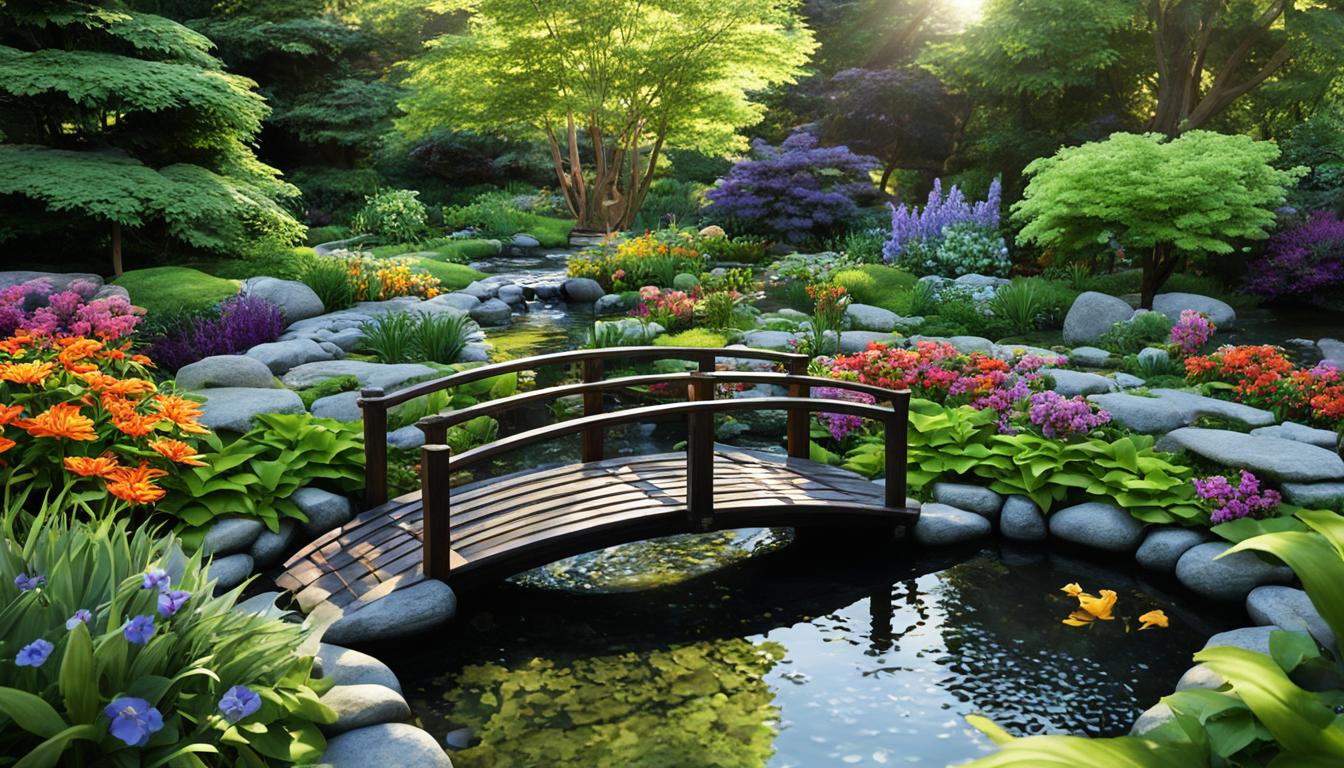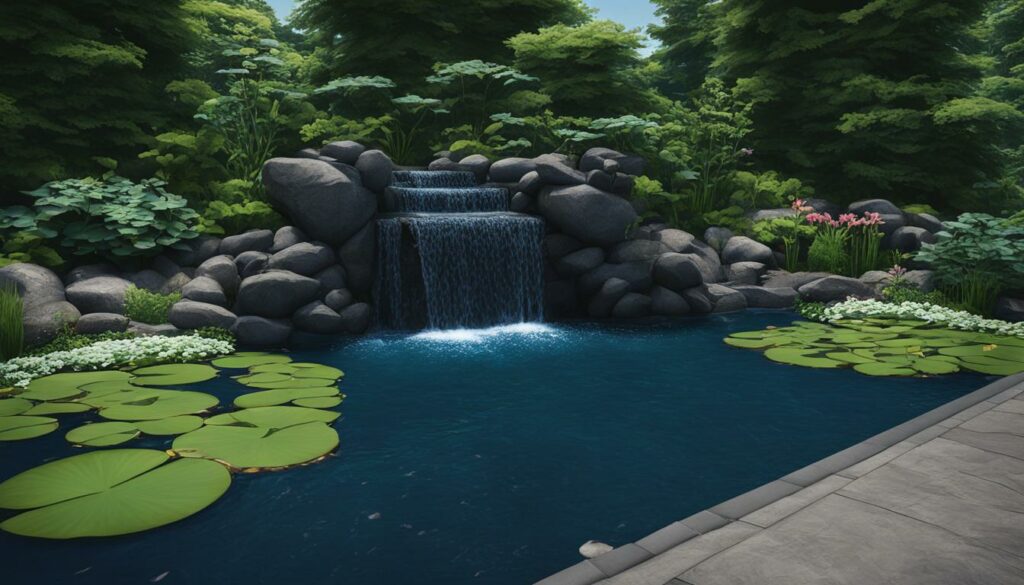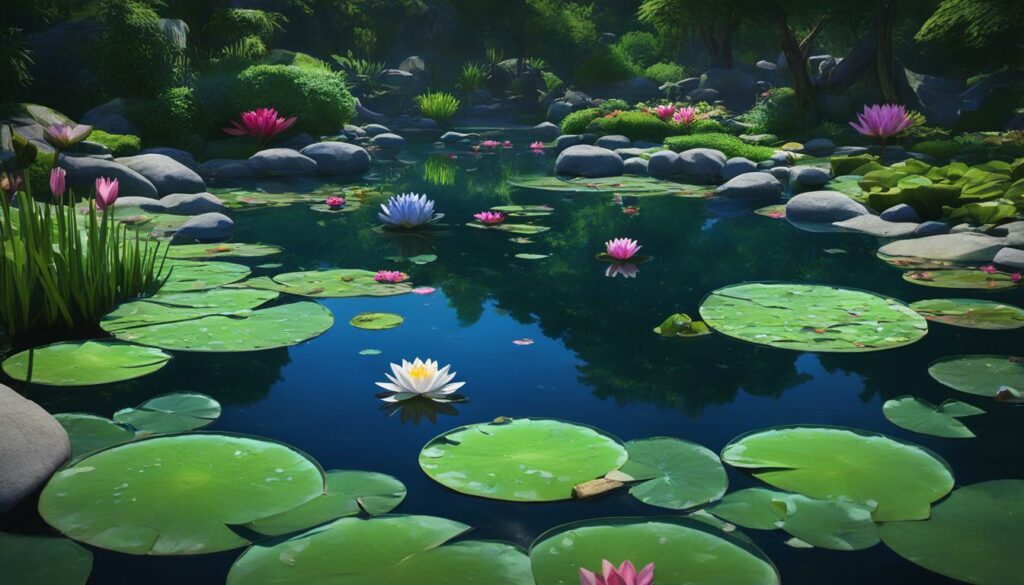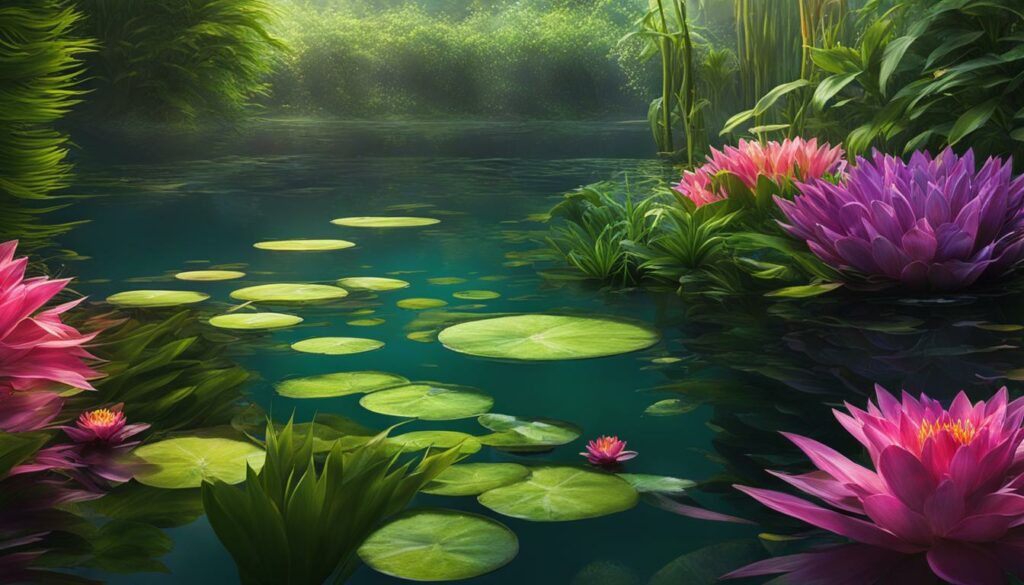
In the heart of a well-curated outdoor space lies the potential for a truly transformative feature: water gardens. These intricate systems are not merely decorative elements; they're vibrant ecosystems teeming with life and energy. When meticulously designed, water gardens become serene backyard retreats, complete with tranquil water features and an abundance of vibrant aquatic plants. The art of creating these aquatic paradises merges aesthetic vision with a deep understanding of natural ecosystems, ensuring that your garden not only looks stunning but thrives sustainably as well.
Those who venture into the realm of water gardening are often seeking more than just a visual upgrade to their property. They aspire to carve out a niche of tranquility where the stress of the daily grind can be washed away by the gentle sounds of flowing water, the sight of graceful koi, and the rustle of foliage in the breeze. A water garden is a living painting, continuously changing and evolving, offering an evergreen source of solace and beauty.
Key Takeaways
- Water gardens transform ordinary spaces into enchanting havens of calm.
- Vibrant aquatic plants are vital for the visual and ecological success of water gardens.
- Tranquil water features like fountains and waterfalls contribute to the serene atmosphere.
- A deep understanding of ecosystem dynamics is essential for sustainable water garden design.
- Water gardens offer a multisensory experience, providing visual beauty and soothing sounds.
Essentials of Water Garden Design
Creating a serene garden pond becomes a dance with nature, where every element is deliberately placed to achieve a harmonious balance. In the art of landscape design, water features stand as the muse, guiding the symphony of aquatic plants and hardscape elements. The key to crafting an alluring water garden is not just in the beauty of its appearance, but also in understanding the intricate web of aquatic landscaping.
Understanding the Basics of Aquatic Landscaping
The foundation of a thriving water garden lies in the basic principles of hydrology and botany. Aquatic plants, from floating water lilies to emergent reeds, play a pivotal role in the ecosystem, demanding knowledge of their specific growth requirements. This ecosystem, when designed with precision, not only supports wildlife but also serves as a natural filtration system, maintaining the clarity and quality of water within your garden oasis.
Choosing the Right Location for Your Water Garden
Selecting the ideal locale for your garden pond is a critical step that influences its success. Adequate sunlight exposure, a level ground, and proper drainage form the triad of locational factors that must be considered. Proximity to existing natural water sources can also impact the health and sustainability of your water garden, as they may introduce native species and natural dynamics to the setting.
Incorporating Natural Elements for Authenticity
To breathe life into the landscape design, incorporating elements that nature herself would applaud is essential. Native rocks, aged logs, and local floral selections not only cultivate the water garden's authenticity but also create microhabitats for various fauna. This touch of nature's diversity brings forward a garden pond that is not just a visually pleasing spectacle but one that vibrates with life.

In conclusion, a water garden is more than an aesthetic enhancement; it is a living tableau that evolves with time. By integrating these essential design elements—knowledge of aquatic landscaping, careful location selection, and incorporation of natural materials—a garden pond can become a thriving, self-sustaining, and picturesque part of your landscape, resonating with the echoes of the natural world around it.
Selection of Water Features for Visual Appeal
The heart of a captivating backyard ecosystem lies in its thoughtful pond design and the selection of water features that enhance its allure. By strategically integrating features such as cascading waterfalls and reflecting pools, not only do we augment the aesthetic value of our gardens but also introduce a level of dynamism through the introduction of movement and sound.
One cannot underestimate the visual impact that water lilies impose upon a garden pond. Their vibrant blooms and lush foliage provide a stark contrast to the stillness of the water, creating a composition that is both balanced and striking. It is the synthesis of these elements that forge a harmonious visual narrative, transforming a basic pond into an enchanting aquatic tableau.

Water lilies do more than just serve as a feast for the eyes; they are cornerstones of a thriving pond ecosystem, offering shade and shelter for aquatic life while simultaneously oxygenating the water. The strategic placement of these floral jewels within the pond's design is crucial, as it sets the stage for a flourishing ecological haven right in your own backyard.
- **Cascading Waterfalls**: A multi-tiered waterfall not only captivates with its visual splendor but also enriches the pond's environment through aeration.
- **Reflecting Pools**: These serene features, often enhancing the mystique of the garden, allow for a quiet space where the sky and surrounding flora are mirrored on the water's surface.
- **Gently Flowing Streams**: Mimicking nature's own designs, these waterways add an auditory charm and serve as natural filters, fostering a vibrant ecosystem.
Integrating these features into a backyard oasis is not merely a matter of personal taste but a deliberate exercise in ecological artistry. With each addition, we find harmony between function and visual appeal, ensuring that our water gardens do not just look stunning but resonate with the innate beauty of nature's own masterpieces.
Integrating Aquatic Plants in Your Ecosystem
The incorporation of aquatic plants into garden ponds is more than just an aesthetic choice; it's an essential step for crafting a sustainable backyard ecosystem. These vibrant life forms contribute significantly to the ecological balance, helping to purify the water, provide shelter for wildlife, and contribute to the overall health of your aquatic environment. When introduced and maintained correctly, a variety of aquatic plants can create a living tapestry that is as beneficial as it is beautiful.

Best Practices for Planting Water Lilies
Water lilies are a cornerstone of many garden ponds, renowned for their stunning flowers and lily pads that dot the water's surface. To ensure they thrive:
- Plant them in heavy clay soil at the bottom of the pond or in containers submerged in the water.
- Position them to receive at least six hours of sunlight per day to encourage blooming.
- Provide a slow-release aquatic fertilizer to promote healthy growth and vibrant blooms.
Maintaining Plant Health in a Garden Pond
Consistency is key when it comes to the health of your aquatic plants. Regular maintenance tasks include:
- Monitoring plants for signs of disease or pests and taking action early to mitigate them.
- Pruning dead leaves and flowers to prevent decay and maintain a clean environment.
- Adjusting or trimming root systems yearly to prevent overgrowth and promote nutrient absorption.
Diversity of Aquatic Plants for a Balanced Environment
Harnessing the natural beauty and benefits of a diverse range of aquatic plants is essential for a balanced backyard ecosystem. Including a variety of species:
- Supports a robust and natural filtration system by competing with algae for nutrients.
- Offers different blooming periods for continued visual interest throughout the seasons.
- Provides varying heights and textures for a dynamic and layered aquatic garden design.
By selecting an array of aquatic plant species, from submerged oxygenators to floating hearts, you will encourage a biologically diverse habitat that supports the entirety of your garden pond's life cycle.
Water Gardens: Enhancing Your Backyard Experience
The essence of water gardens lies in their capacity to transform ordinary spaces into serene backyard retreats. The creation of a water garden is not merely an exercise in aesthetics; it's about crafting an environment that resonates with the restful cadence of nature. The sound of a babbling brook or the reflective calm of a still pond can mute the incessant clamor of urban life. As water mirrors the sky and the vibrant hues of aquatic plants sway gently beneath the surface, homeowners find themselves enveloped in a tranquil water feature that feels as if it has been lifted from the pages of a pastoral poem.
Through thoughtful design, water gardens present a tableau that is both visual and aural in its allure, inviting a spectrum of sensory experiences. The gentle rustle of reeds in the wind, the visual dance of light upon the water's surface, and the dynamic population of local wildlife all contribute to the symphony of a backyard ecosystem. A well-engineered water garden functions as a living, breathing entity, engaging its owners in a ritual of relaxation and introspection that is rarely found in the confines of modern dwellings. Each tranquil water feature that is carefully integrated into the landscape serves as a chapter in an unfolding story—one that nurtures a deeper connection with the natural world.
The pursuit of such a retreat is an investment in the quality of life. Water gardens act as natural stress relievers, where moments of tranquility can be harnessed amidst the flutter of dragonflies and the bloom of lotuses. These verdant alcoves serve not just as a testament to the homeowner's vision but also as a legacy that enriches the very essence of their outdoor living space. A thriving water garden, bursting with life, introduces a balance that can harmonize with even the most bustling of lifestyles, making the dream of a backyard retreat a tangible reality.








